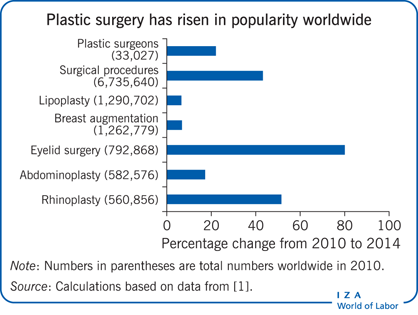Elevator pitch
Being beautiful gives a person an advantage in many settings. Attractive people earn more and have an easier time getting hired. People spend large amounts of money on goods and services to enhance their beauty. Is this enhancement worth pursuing? Research suggests that the expected improvement in beauty from these goods and services is limited. Therefore, despite the large returns from having an attractive appearance, the cost-effectiveness of investment in beauty enhancement is ambiguous. For the average person, the monetary benefits of plastic surgery, medical treatments to increase height, and expensive clothing are not worth the cost.

Key findings
Pros
Being beautiful gives a person an advantage in many settings, including at work and in choice of a spouse.
Plastic surgery and other beauty-related goods and services are commonly used and have been increasing in popularity around the world.
With proper measures, a person can change a wide variety of physical attributes.
Beauty-related goods and services have been found to be effective in enhancing a person’s physical attractiveness.
Achieving greater equality in beauty may diminish discrimination based on physical attributes and improve economic efficiency.
Cons
Beauty-related goods and services yield limited improvement in beauty, on average.
Some beauty-related treatments, such as plastic surgery and medical procedures to increase height, are expensive and may involve pain or discomfort and risky side effects.
Additional money spent on beauty-related goods and services may yield smaller gains in income for low- and average-income earners than for high-income earners.
On average, spending on plastic surgery, medical treatments to increase height, and expensive clothing do not yield substantial monetary gains.